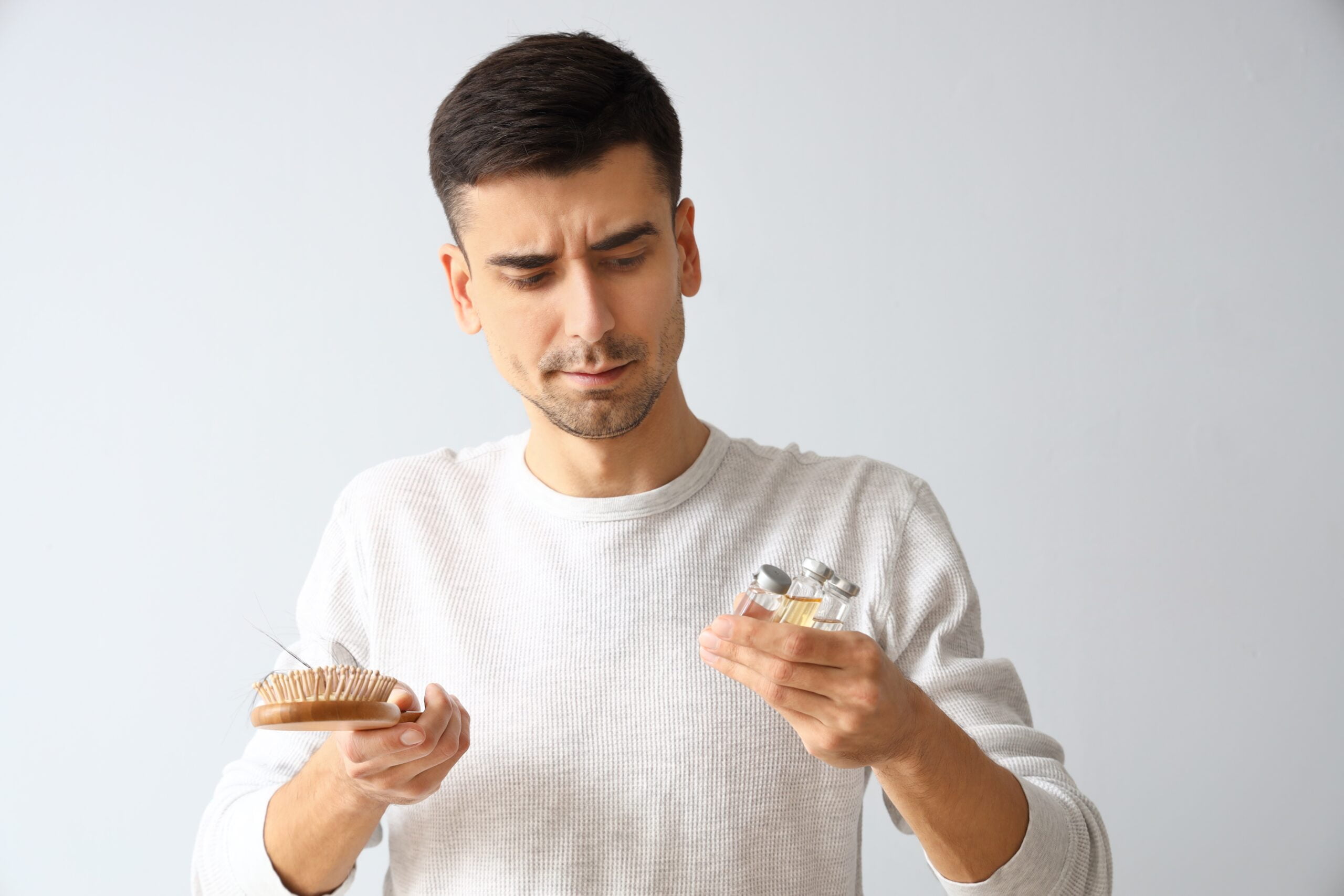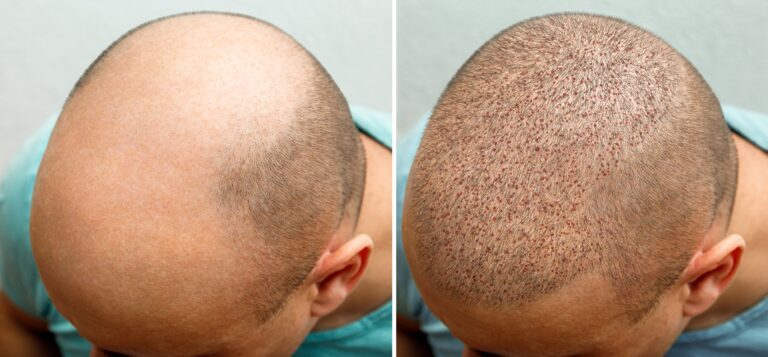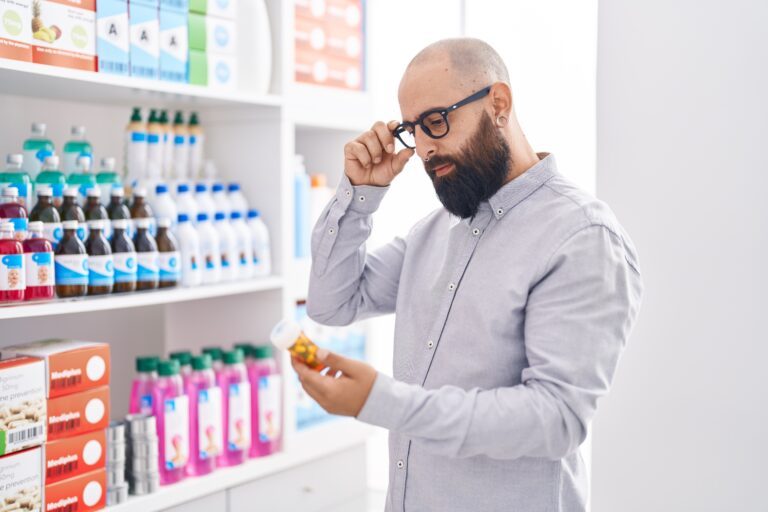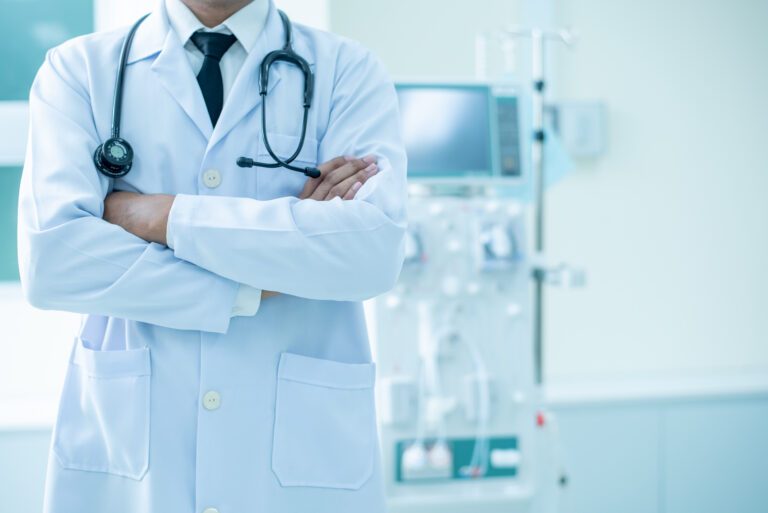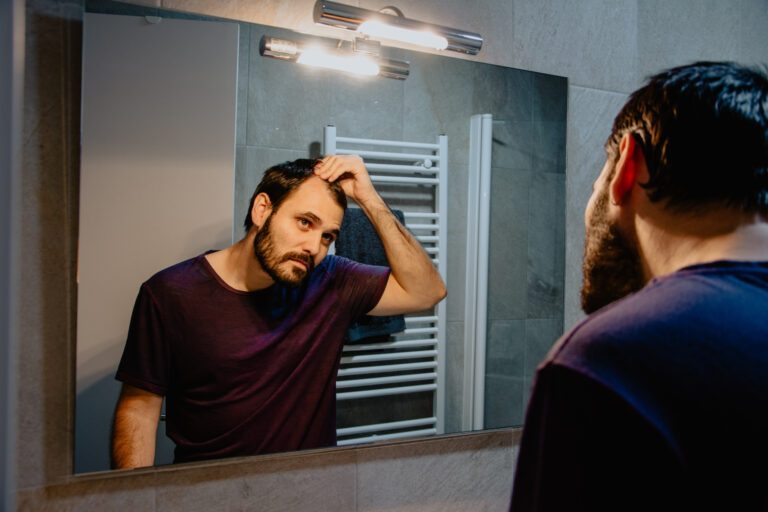When Is The Best Time To Start Taking Finasteride?
Male pattern baldness is a condition that plagues millions of men across the globe. Since it’s a genetic condition, many men are under the impression that there’s nothing they can do about it. However, this isn’t true. There are plenty of treatment options available, including finasteride.
If you’ve heard of this drug and are thinking of taking it, you may be wondering what the best time to take finasteride is.
The ideal time to start taking finasteride is as soon as an individual starts noticing significant hair loss. The earlier a finasteride treatment regimen is started, the higher the chances of it proving successful. Waiting too long before starting may lead to an individual reaching a hair loss level where it’s too late.
Read on to learn more about how finasteride works, as well as the best practices to adopt when taking it.
How Does Finasteride Work?
Finasteride is a prescription drug widely used by those suffering from male pattern baldness. This drug is sold in pharmacies under the brand name Propecia. You may also find it under other brand names, such as Proscar.
This medication typically comes in tablet form and is administered orally.
To understand how finasteride can help you overcome the symptoms of male pattern baldness, you first need to know what causes this hair loss.
Finasteride and DHT
The main cause behind male pattern baldness is an imbalance in your body’s dihydrotestosterone (DHT) level.
When your body produces an excess of this sex hormone, it has an adverse effect on your hair follicles. DHT blocks important receptors in your hair follicles, which causes them to get smaller and weaker.
When you have consistently high DHT levels, your hair follicles eventually die altogether.
Finasteride helps curb the effect of DHT by making your body produce less of it. It does so by blocking the enzymes that convert testosterone into DHT.
As a result, the level of DHT in your body diminishes, and this gives your hair follicles a chance to rejuvenate and return to their normal function.
Keep in mind that the hair growth effects of finasteride are only present as long as you take the drug every day.
Skipping a day every now and then will still produce results, but they’ll be less than optimum.
Moreover, if you decide to stop taking finasteride for any reason, it’ll only be a matter of months before your hair loss issues return to just the way they were before you started taking the drug.
When to Start Finasteride Treatment?
Finasteride is a viable option for hair loss treatment as long as your hair follicles aren’t long gone. In other words, as long as the hair follicles aren’t suffering from permanent damage, then you still have a chance.
However, it’s important that you start taking the drug as soon as you notice that your hair is thinning and falling to get the best results.
Don’t wait until the symptoms are overly severe to start taking finasteride. If you do, your DHT levels will have spiraled out of control, and it might be difficult to get full benefits from it.
The earlier you start your finasteride treatment, the better the chances of it succeeding.
However, note that finasteride isn’t a suitable option for everyone. You should always consult your doctor to see if this drug is the right way to go. Make sure to be completely transparent with your doctor about your medical history and any other medication you’re currently on.
Additionally, finasteride doesn’t treat all types of male pattern baldness. Those who are at the stage where all of their hair follicles are already beyond repair won’t find finasteride effective.
What Is the Best Time of Day to Take Finasteride?
When you get on a finasteride program, you want to do everything to make sure that you’re getting the most out of the medication. After all, finasteride doesn’t come cheap. This drug is estimated to cost users between $50 and $75 every month.
In turn, you may be wondering about the best time of day to take finasteride.
The answer is that there’s no ideal time of day to take your finasteride tablet. The key is to be consistent. Choose a time of day that works best for you and stick with it.
Whether you take finasteride in the morning or at night won’t make much of a difference in its effectiveness. What matters is that you take it at the same time so that its levels in your bloodstream stay uniform.
If you forget to take your daily dose of finasteride on time, here’s what to do:
- In cases where less than six hours have passed since you should’ve taken your tablet, take it as soon as you can.
- On the other hand, if it’s been longer than six hours, skip the day’s dose and take your tablet the next day at the usual time.
You should never take two tablets at once to compensate for forgetting a dose. Doing so will increase the finasteride levels in your bloodstream and make you more susceptible to the side effects.
Can I Take Finasteride on an Empty Stomach?
You can safely ingest finasteride on an empty stomach. Some medications can cause gastric problems, where the lining of the stomach gets irritated by the medicine. Fortunately, finasteride doesn’t belong to that group of medications.
What Is the Recommended Dose for Finasteride?
Finasteride is primarily used for two conditions; hair loss, and cases of an enlarged prostate gland. The dose will be different depending on the usage.
The dosage of finasteride most often prescribed by doctors to those taking the drug as a hair loss treatment is one milligram a day.
Those taking the drug to treat the symptoms of an enlarged prostate need to take a larger dose of five milligrams daily to achieve the desired effect.
Unfortunately, the latter group is more at risk of developing the side effects associated with finasteride.
Side Effects of Finasteride
Since finasteride is a drug that affects the levels of a sex hormone in your body, it has a number of sexual side effects associated with it.
Some of these side effects are more common than others. Fortunately, the common ones aren’t that severe.
Common Side Effects
- Reduced sexual desire: DHT is one of the hormones that increase sexual desire, and finasteride reduces its levels in your bloodstream. So, it’s only natural that both sexual desire and performance get reduced to some extent.
- Dizziness and confusion: Do you know that moment when you stand up suddenly and feel like you’re going to faint for a second? Finasteride may increase the instances of that moment happening.
- Chills and cold sweats: Finasteride may cause you to feel abnormally cold even when the room temperature is normal. Fortunately, this is one of the mildest side effects that shouldn’t cause concern.
Uncommon Side Effects
- Sleeplessness: The dizziness and drowsiness caused by finasteride may increase enough to make your sleeping a little difficult.
- Nose issues: Sneezing and irritated/stuffed nose may sometimes come along with taking finasteride.
- Sudden change in body weight: Individuals taking finasteride may exhibit sudden weight loss or weight gain. It’s still unclear why this happens, but it’s not an alarming issue.
- Skin problems: Finasteride may cause redness, rashes, or dryness of the skin, resulting in an itchy feeling. It’s highly recommended to not itch the affected skin to avoid accentuating the problems.
Rare Side Effects
- Decreased semen production: While the reduced sexual desire is normal, decreased semen amount isn’t. If you notice that ejaculation isn’t as it used to be, you should inform your doctor immediately to look for an alternative medicine.
- Stomach pain and diarrhea: Finasteride isn’t a gastric irritant, but it can cause digestive tract issues in some individuals. If that happens, reach out to your doctor.
- Headache and back pain: Head and abdomen pain is a rare side effect of finasteride, but should it happen, it’s recommended to switch from the drug.
The side effects of finasteride are most likely to be mild and temporary. However, some people may have more severe reactions to the drug.
In some cases, finasteride users develop chronic symptoms. Studies show that this occurs in 16% of finasteride users. This condition is known as the post-finasteride syndrome.
It involves the person suffering from the side effects of finasteride for an extended period, even after they’ve stopped taking the drug. This is particularly true for the sexual dysfunction symptoms mentioned above.
Frequently Asked Questions (FAQs)
Are there drugs you can’t take with finasteride?
According to the FDA, there are no drugs that have dangerous interactions with finasteride. That being said, there’s a risk of other drugs raising the level of finasteride in your blood above the safe level.
This high concentration can increase the chances of you developing post-finasteride syndrome.
Is finasteride a performance-enhancing drug in sports?
Finasteride itself isn’t a performance-enhancing drug. However, it’s still banned by the World Anti-Doping Agency (WADA). The agency prohibits athletes from using finasteride because it can mask other banned substances.
This makes it more difficult for the WADA to identify violators through urine testing.
Can I take finasteride as a teenager?
It’s not recommended to take finasteride if you’re younger than 18 years old. Sexual hormones are critical in the physical puberty manifestations associated with leaving teenhood.
Finasteride impairs your sexual hormones, which may lead to undesired physical manifestations.
Leaving the adolescence period is already stressful for the teenager, and impairing the sexual hormones may place an even bigger impact on mental health.
How long should I take finasteride?
Finasteride will become your life-long companion as long as hair loss is a problem in your life. The hair loss issues will start to appear again soon after you stop taking the medication.
Fortunately, most of the side effects are temporary and won’t last throughout your life-long usage of the drug.
Conclusion
If you suffer from male pattern baldness, you’re probably all too familiar with the undesirable effects it can have on someone’s quality of life. Therefore, you’re probably searching for ways to address the issue.
During your search, you’re highly likely to have read about finasteride. In turn, you may have wondered what the best time to take finasteride is.
The key is to start taking the drug when your hair loss is still in the early stages. If you wait for too long, you run the risk of your hair follicles getting too damaged for finasteride to be a viable option.
If you start early and consistently take the tablets at a fixed time every day, you have a great chance of seeing promising results in a matter of months.

